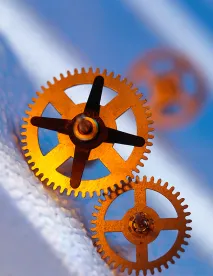This is not exactly breaking news, and other commentators have discussed it, but I think that the Solicitor General’s Amicus Brief urging the Supreme Court to grant cert. in American Axle v. Neapco Holdings, Appeal No. 20-891 (May 2022) contains language that would be helpful to any inventor faced with a ruling that an invention is not patent-eligible because it is an attempt to monopolize a natural law. If the facts of this case have become hazy, please re-read my posts of January 13th and 11th, 2021, on the proceedings below. American Axle petitioned for cert. after losing at the Fed. Cir. level and the Supreme Court asked the Solicitor General to provide her opinion on the question of “[w]hether claim 22 of petitioner’s patent, which claims a process for manufacturing an automobile driveshaft that simultaneously reduces two types of driveshaft variation, is patent eligible under Section 101.” The Solicitor General’s brief said that it should be patent eligible.
This position is well-known by now, but two aspects of the brief deserve some attention. The first is that the Brief gingerly dances around the Mayo decision, trying to justify it while not expressing much in the way of approval: “The Mayo Court concluded that the various steps of the particular claimed process before it, ‘when viewed as a whole, add[ed] nothing significant beyond the sum of the parts taken separately’”. More importantly, the Brief urges the Court to see that “Holistic consideration of a claim at the second step [of the Mayo/Alice analysis] is incompatible with an approach that ignores individual claim elements that are conventional in isolation.” The brief goes on to urge:
“Clarification of this point is especially important because the question that a court addresses at step two of the Mayo/Alice framework—i.e., whether the elements of a disputed patent claim ‘are sufficient to ensure that the patent in practice amounts to significantly more than a patent upon the concept itself’…is coextensive with the ultimate question of patent-eligibility in many cases where a court reaches that step…step-two analysis should be performed in accordance with the longstanding principle that a combination of claim elements may reflect a patent-eligible invention even though each individual element was part of the prior art.”
This sounds routine, but what is “novel” in my view is how the Brief goes on to suggest how the step 1/step 2 analysis should be carried out:
“Under that approach to step two, the step one determination whether a particular claim is ‘directed to’ a natural law can simply serve as an initial screen, identifying claims that warrant further scrutiny to ascertain whether they claim patent-eligible applications of laws of nature or instead effectively claim the natural laws themselves. By contrast, if the court at step two were foreclosed from considering claim elements that have traditionally been viewed as relevant to patent-eligibility, consideration of these elements would need to be incorporated in some fashion into the step-one inquiry.”
In other words, if step one identifies a natural law in a claim at step one so that it has a basis to proceed to step two, the claims should not be automatically doomed if the remaining claim elements, viewed holistically, and not in isolation, make manifest a patent-eligible Section one class of invention. Or, as the Brief frames the question: “[I]n applying Section 101 to the more traditional industrial manufacturing method at issue here, the Court can more readily draw on historic practice and precedent to clarify the governing principles, which can then be transferred to other contexts.”
This amounts to urging the Court to grant cert. because this invention is easy to understand, and not one of those messy software or medical analysis claims. Even if the Court denies cert., the approach proposed in this Brief may change the minds of at least some of the Fed. Cir. judges that have steadfastly voted against rehearings en banc that might put Section 101 back in its place.


 />i
/>i
